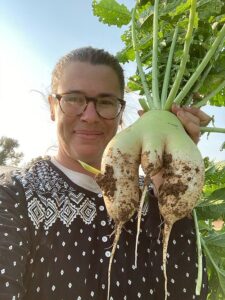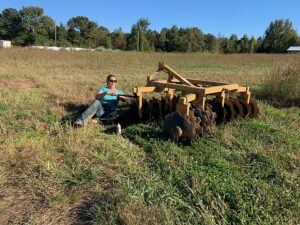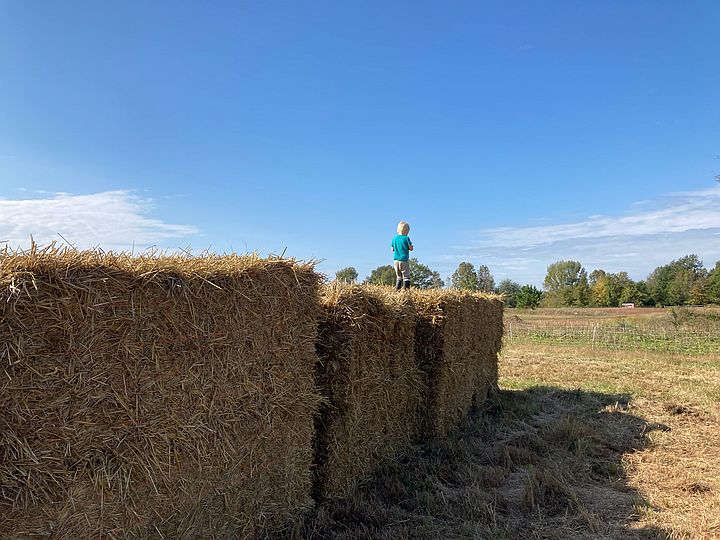Coasting into fall

It is time to start coasting into fall. While we are still busy and there will always be plenty to do, the sense of urgency is waning. That runaway freight train feeling that defines spring and summer is gone. It is time to harvest, clean up and get the field ready for winter, and start planning for next year.
Much ado about Mulch
We had 420 bales of wheat straw delivered last week. The straw will be used to mulch the pathways between our summer grown crops. This year, we tried planting a buckwheat living mulch instead of mulching the pathways with straw. Growing buckwheat instead of spreading straw mulch saved a lot of money, but more importantly it saved tons of time. Add to that the bonus of feeding bees and other pollinators!
Unfortunately the method had its limitations. Once the buckwheat was mature it was easy to trample down. The idea was for the trampled buckwheat to act as a mulch and keep weeds at bay. This worked, that is until July when the weeds got serious. There are probably applications for this method, and I plan to keep experimenting and exploring. But the plan for next year is straw.
The disadvantage to wheat straw is that it can be hard to find. Wheat is not grown as widely in the midsouth as in other parts of the country. And some farmers burn off the post harvest residue rather than baling the straw. Wheat straw is widely sought for roadworks and construction, so it is in high demand. By purchasing it now we are securing our supply. It is a lot less expensive to buy it now, too.
2020 wins in the bag
Not all of our new experiments in 2020 fell flat. We tried a lot of new things! Many of them were very successful. Growing the butternut squash on

a trellis, for example. We had much less damage to the squashes, and because of that we were able to bring in a bigger harvest. We doubled the spacing between onion plants and were rewarded with our best onion harvest ever. Alternating beds of okra with beds of squash made the okra harvest so much easier that I can guarantee we are never going back. There were a lot of wins in 2020. I find it important to remind myself of this.
And even where we failed we have had the opportunity to learn. I learned about potato leaf hopper this year. We have never had a potato crop failure like we had this year. And hopefully we never will again. We will do better in 2021. Or at least we will try.
That is the great thing about starting planning for 2021 now. Proximity. I do a lot of planning in December and January. And there is a lot of forgetting that happens in November. The reality of 2020 is still sharp in my mind. It is all too easy to don the rose colored glasses as I leaf through seed catalogues (i.e. farmer porn) in the deep of winter. To think that somehow we will be capable of doing whatever we found impossible the previous year. That we will execute plans to the letter. That we will somehow, magically, stay on top of pest and weed problems. Hear in the present, I know none of that is true. In this reality is the best place to plan. And I am planning on having a pretty amazing year.
Small shares
Sweet potatoes
Napa cabbage
Daikon radish
Hakurei turnips
Pepper
Cauliflower OR broccoli OR kale (planning on rotating these so everybody eventually receives cauliflower and broccoli
Full shares
Sweet potatoes
Napa cabbage
Daikon radish
Hakurei turnips
Pepper
Salad mix




You must be logged in to post a comment.